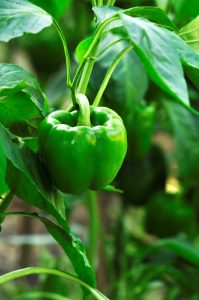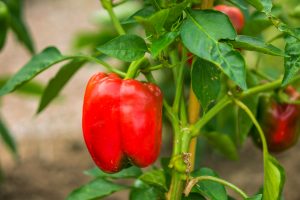How to Grow Bell Peppers
Peppers are a great choice for your garden. They work well in warm climates and are resistant to many garden pests. Here are some tips that you can follow when growing bell peppers:
Planting Bell Peppers
 Bell peppers are temperature sensitive and thrive in warm temperatures. This is why you should always grow the peppers indoors, at least for a short period of time. Even a hint of frost can destroy the plants completely or restrict fruit growth.
Bell peppers are temperature sensitive and thrive in warm temperatures. This is why you should always grow the peppers indoors, at least for a short period of time. Even a hint of frost can destroy the plants completely or restrict fruit growth.
You can plant the seeds about eight to ten weeks before the last frost of the spring. You can grow about three plants in one pot, weeding out the weak seedling quite early. These plants flourish best when two plants are grown together. For the seeds to germinate, the temperature has to be at least 70°F.
Before you transplant the seeds into the garden, you will first need to harden them. This should be done about ten days before the transplantation will take place. During this time, make sure that the garden soil has been fertilized. The soil should be well draining.
You will need to plant the bell peppers in soil that is at least 65°F or it will not grow. In most cases, bell peppers will grow best in temperatures between 60°F and 90°F. With the exception of the plants that you have paired together, you should leave about 24 inches of space between the plants. Keep a few matchsticks and a small amount of fertilizer in the soil with the plants to add some sulfur. Choose a fertilizer that is lower in nitrogen as an excess of nitrogen could reduce the fruit from setting.
Maintaining the Bell Peppers
On average, you should water bell peppers about one or two inches each week. Nonetheless, if you live in a hot or dry climate, you may have to water the plants every day. Despite being planted in well-draining soil, you will need to help the soil to retain some of its moisture. This can be done by adding mulch.
Depending on how the plants are growing, you may need to support the plants. This can be down with the help of tomato cages or even constructing your own support. After the first fruit appears, fertilize the soil once more. If you would like the fruit to get even bigger, spritz dissolved Epsom salts on the fruit when it first begins to blossom and then again about ten days after that.
Harvesting the Bell Peppers
The longer that the fruit remains on the plant, the sweeter they become. Their vitamin C content also increases. The bell pepper harvest comes to an end once all of the fruits have attained optimal size. To limit the amount of damage done to the plant and fruit, cut the fruit off the plant. Bell peppers can be stored in a refrigerator for about ten days after they have been harvested.
This is all of the information that you require on how to grow your own bell peppers. You can now grow nutritious peppers in your own garden.
To learn more about vegetable gardening of various kinds, you should absolutely check out The MiniFarming Guide to Vegetable Gardening.

